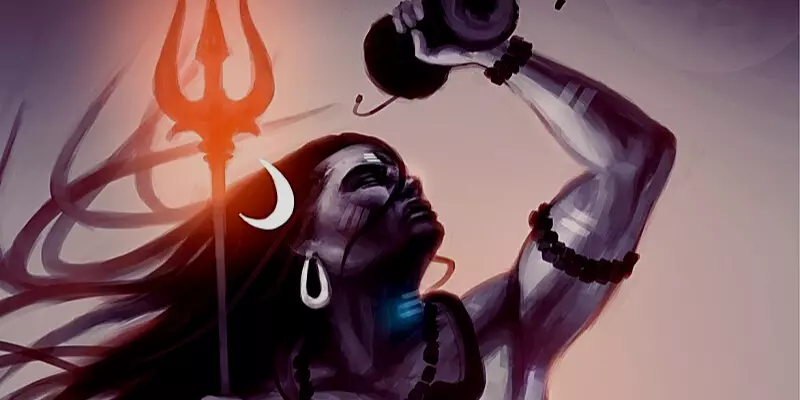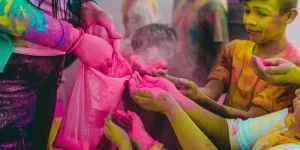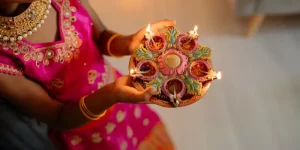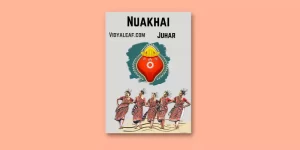Maha Shivratri is a Hindu festival celebrated to honor Lord Shiva. It is observed on Chaturdashi Tithi during Krishna Paksha in the month of Phalguna. In the Hindu Calendar, Maha Shivratri falls on the day before the new moon of Phalguna month. Shiva Chaturdasi falls in every lunar month (12 per year). The main festival is called Maha Shivratri, which is held on the 13th night and 14th day of the month of Phalguna.
Maha Shivaratri is observed by people by remembering Lord Shiva and chanting prayers, fasting, and meditation on moral values, honesty, forgiveness, charity, and ethics. Devotees keep awake all night by lighting Diyas. Lighting a lamp has deep spiritual significance.
Diya symbolizes goodness, purity, good luck, and power and denotes the elimination of darkness and going into the light. It is a major festival for Hindus and marks a remembrance of overcoming darkness and evil in life and the world.
Falling in the Indian month of Phalguna, Maha Shivaratri is one of the most lavishly celebrated days. This year the celebration of the auspicious occasion will start at 3:16 am on 1st March and will end at 1:00 am on 2nd March.
History of Maha Shivratri
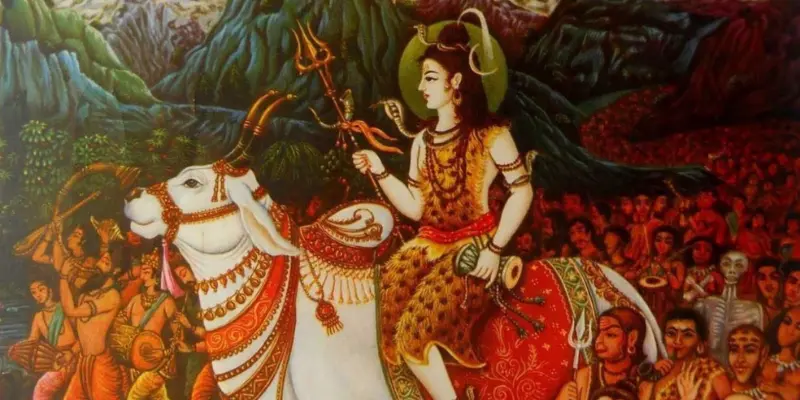
The myth of Maha Shivratri is mentioned in several Puranas such as Skanda Purana, Linga Purana, and Padma Purana.
Different legends describe the importance of Maha Shivaratri. According to one epic in the Shaivism tradition, it is the night when Lord Shiva performs the heavenly dance of creation, protection, and destruction.
The chanting of mantra, the reading of Lord Shiva’s Scriptures, and the chorus of devotees join this heavenly dance and recall Lord Shiva’s presence everywhere. Maha Shivratri is a remarkable annual dance festival at major Hindu temples Konark, Khajuraho, Pattadakal, Modhera, and Chidambaram.
Nataraja is the supreme god of dance and is also another form of Lord Shiva. The dance form of Lord Shiva such as Tandava and Lasya is performed in different forms by classical dancers with respect for Lord Shiva.
According to another legend, this is the sanctified night when Lord Shiva and Goddess Parvati got married. Another legend states the offering to Lord Shiva’s idol such as the Shiva Linga is an annual celebration to get over past sins done by anyone, to restart on a righteous path thus reach Mount Kailasha and deliverance.
According to another belief, Goddess Parvati once claimed to Lord Shiva to save the earth from destruction. Lord Shiva agreed to save the world on the condition that its residents worship him with much dedication and passion.
Thus, this day came to be known as Maha Shivratri. It is also believed that flowers bloom exactly the day after Maha Shivratri, signaling the richness of the Earth.
According to the story in Shiva Purana, two of the groups of Hindu Gods- Lord Brahma and Lord Vishnu were challenging each other to establish superiority among them. Terrified at the strength of this battle, the other gods requested Lord Shiva to intercede and make them realize the inefficacy of this fight.
Lord Shiva concluded the form of a huge column of fire between Lord Brahma and Lord Vishnu. The later Gods decided to find the climax of the fire column. Lord Brahma accepted the form of a swan and flew upwards while Lord Vishnu took the form of Varaha and went inside the Earth.
Neither Brahma nor Vishnu could reach the end despite their endless search. During the journey upwards, Lord Brahma came across a flower Ketaki. When asked where she came from, Ketaki replied that she had been placed at the top of the burning column as an offering.
Lord Brahma decided to end his search and took the flower as a witness and came. At this, Lord Shiva disclosed the fact and became angry. Lord Brahma didn’t find the uppermost limit and told a lie.
Thus, punished by lord Shiva for telling a lie and is cursed that no one will pray for him. Even the Ketaki flower was banished from being used as an offering for any worship.
Because it was on the 14th day in the dark half month of Phalguna when Lord Shiva first displayed himself in the form of Linga, the day is mostly auspicious and is celebrated as Maha Shivratri.
Story of Maha Shivratri
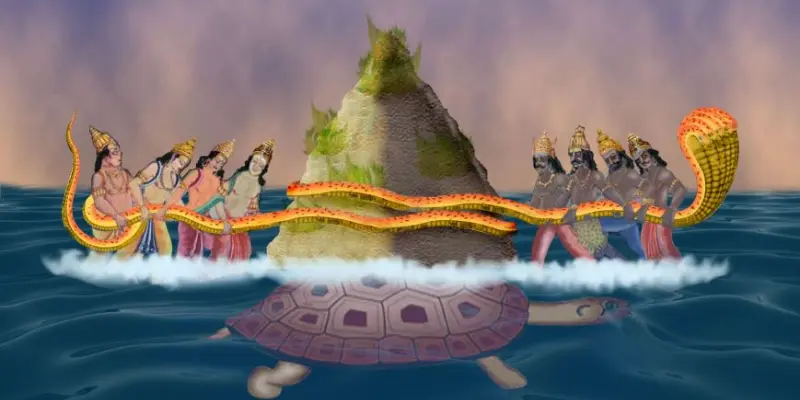
It is believed that on this particular day, Lord Shiva swallowed the poisonous “Halahala” produced during Samudra Manthan. Lord Shiva beheld it in his neck which marked and turned blue. So, he is named after Neel Kanth. It is also accepted that the famous NeelKanth temple is the place where this incident took place.
How to Celebrate
The celebration of Maha Shivaratri includes maintaining a Jaagaran, an all-night vigil, and prayers. The Hindu devotees mark this night as overcoming darkness in one’s life and the world through Lord Shiva. The people offer fruits, Bel leaves, sweets, and milk to Lord Shiva.
Women and men perform all-day fasting with Vedic worship to Lord Shiva and perform meditation yoga. In Lord Shiva’s Temples, “Omm Namah Shivaya”, the holy mantra of Lord Shiva is chanted throughout the day. Devotees admire Lord Shiva through the recitation of Lord Shiva Chalisa.
Celebration of Maha Shivratri in India
Tamilnadu: Maha Shivratri is celebrated in Tamilnadu with great splendor and fanfare in the Annamalaiyar Temple located in the Tiruvannamalai district. Girivalam is the special process of worship in this festival. Devotees walk 14km barefoot around Lord Shiva’s temple on top of the hill. A huge lamp of oil and camphor is lit on the hilltop at sunset.
The major Jyotirlinga Shiva temples of India, such as in Varanasi and Somanatha help as sites for fairs and special events.
Andhra Pradesh: In Andhra Pradesh and Telangana, Maha Shivratri Yatras are held at Mallayya Gutta near Kambhalapalle, Gundlakamma Kona near Railway Konduru, Penchalakona, Bhairavakona, Uma Maheswaram among others. Special pujas are held at Pancharamas- Amararaman of Amaravati, Somaramam of Bhimavaram, Draksharamam, Kumararama of Samarlakota and Ksheerarama of Palakollu.
The day after Maha Shivratri is celebrated as Brahmotsavaalu at Sri Sailam, one of the 12 Jyotirlinga sites. At Rudreshwara Swamy’s 1000 pillar temple in Warangal, Maha Shivratri Utsavalu is held. Devotees crowd for the special poojas at Srikalahasti, Mahanandi, Yaganti, Antarvedi, Kattamanchi, Pattiseema, Bhairavakona, Hanamkonda, Keesara gutta, Vemulawada, Panagal, Kolanupaka, and others.
Himachal Pradesh: The Mandi fair in the town of Mandi is very famous as a venue for the Maha Shivaratri festival. It changes the town as devotees rush in. It is believed that around 200 gods and goddesses of that area assemble here on the day of Maha Shivaratri.
Mand is one of the oldest towns of Himachal Pradesh with about 81 temples of gods and goddesses on its border. It is located on the banks of Beas and is popularly known as the Cathedral of Temples.
Kashmir: Maha Shivaratri is also celebrated by Hindus of Kashmir and is called Herath in Kashmiri, a word derived from the Sanskrit word Hararatri the Night of Hara ( another name of Lord Shiva). Shivaratri is regarded as the most important festival of the community.
Maha Shivratri is celebrated by people on Trayodashi or the 13th day of the dark half of the month of Phalguna but in the rest of the country, it is celebrated on Chaturdashi.
The reason is that the festival is celebrated for one full fortnight as an elaborate ritual and is associated with the appearance of Bhairava (a form of Lord Shiva) as a Jwala Linga. It has been described as Bhairavotsava. On this occasion, Bhairava and Bhairavi his Shakti are appeased through worship.
Central India: Central India has a large number of Lord Shiva devotees. The Mahabaleshwar Temple, Ujjain is one of the most honored and blessed temples of Lord Shiva, where a large mass of devotees gather to offer prayers and get blessings on the day of Maha Shivaratri.
Tilwara Ghat in the city of Jabalpur is the place where the festival is celebrated with great joy. The Math Temple in the village of Jeonara, Seoni also celebrates Shivaratri with much religious fervor.
Shobha Yatras are organized by various Hindu organizations in different cities of Punjab. Shivaratri is a grand festival for Punjabi Hindus.
Maha Shivaratri Mela is held at Bhavnath Junagadh in Gujrat where bathing in the Mrugi( Mrigi) Kund is considered holy. According to the legend, Lord Shiva himself comes to bathe in the Mrugi Kund.
West Bengal: In West Bengal, Maha Shivaratri is observed religiously by unmarried girls seeking a suitable husband, often visiting Tarakeswar.
Odisha: In Odisha, Maha Shivaratri is also celebrated with great fervor. It is also known as Jagara. Devotees fast for the fulfillment of their wishes and desires and take Prasad after the rise of Mahadipa ( The great Diya rises at the top of every Shiva temple). It is usually held at midnight. Unmarried girls also worship Lord Shiva for seeking a suitable groom.
Maha Shivratri is optional, pregnant women, children, sick people, and the elderly are advised not to observe the fast. Many people opt for the ‘Nirjala’ fast, i.e. where people do not take water or food for the whole day.
Temples such as Dhabaleswara temple at Cuttack, Lingaraj temple at Bhubaneswar, Akhandalamani temple in Bhadrak, Gorakhnath, and Astasambhu temple in Jagatsinghpur, Lokanath temple in Puri, Kapilas in Dhenkanal, Panchalingeshwar temple in Baleswar, Gupteshwar temple in Koraput are very famous Shiva temples in Odisha. People offer milk, bel leaves, coconut, and banana for Shivalingam.
Special worships are performed at the Karuvadikkuppam Kurusithananda temple in Pondicherry on the eve of Maha Shivaratri. Various items including milk and sandalwood are offered to Shiva linga. Also, a Natyanjali was held at the temple.
